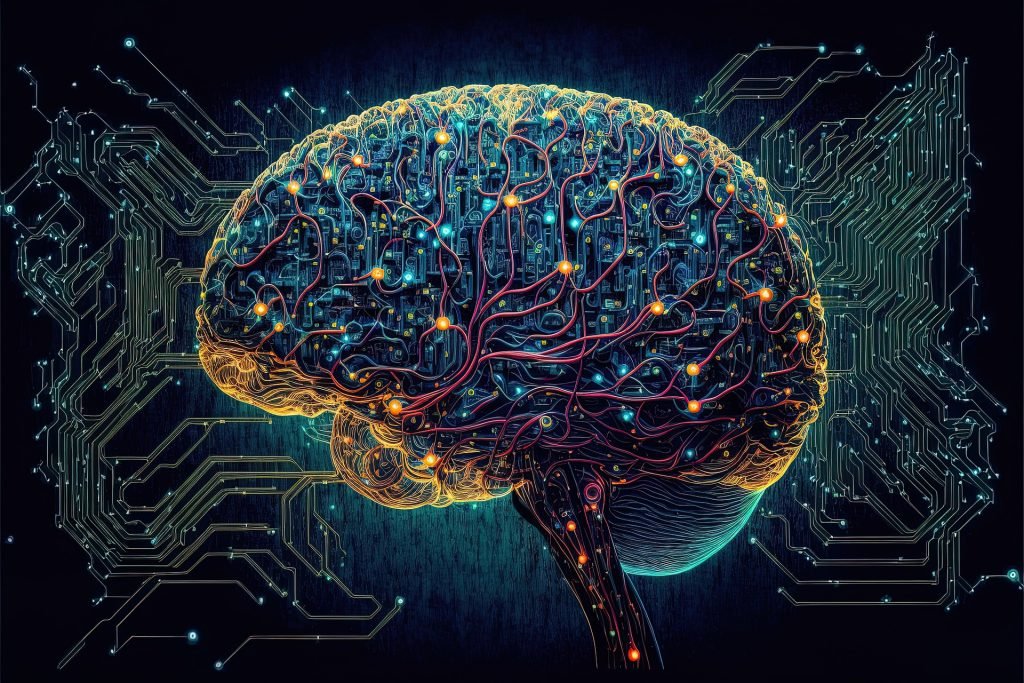
“The development of full artificial intelligence could spell the end of the human race….It would take off on its own, and re-design itself at an ever increasing rate. Humans, who are limited by slow biological evolution, couldn’t compete, and would be superseded.”
What is Artificial Intelligence (AI)?
Artificial Intelligence, often abbreviated as AI, refers to the simulation of human intelligence in machines, allowing them to perform tasks that typically require human intelligence. These tasks encompass learning, reasoning, problem-solving, perception, language understanding, and more. AI systems are designed to adapt and improve their performance based on data and experiences.
The Evolution of AI: From Theory to Reality
AI has a rich history that dates back to the 1950s when the concept was first introduced. Early pioneers like Alan Turing and John McCarthy laid the groundwork for AI by proposing theories and developing the first AI programs. However, it wasn’t until recent decades, with advancements in computing power and the availability of massive datasets, that AI truly started to flourish.
Types of Artificial Intelligence
AI can be classified into two primary categories: Narrow AI and General AI.
-
Narrow AI (Weak AI): Narrow AI is designed to excel in a specific task or set of tasks. Examples of Narrow AI include virtual assistants like Siri and Alexa, chatbots, recommendation systems, and image recognition algorithms. These AI systems demonstrate remarkable proficiency in their specialized domains.
-
General AI (Strong AI): General AI refers to an AI system with human-like cognitive abilities, capable of understanding, learning, and executing tasks across diverse domains. While General AI remains a theoretical concept, researchers and scientists are continually working to achieve this level of AI intelligence.
Applications of AI Across Industries
The impact of AI spans across various sectors, revolutionizing how businesses operate and enhancing everyday lives. Let’s explore some of the key areas where AI has made significant strides:
-
Healthcare: AI has transformed the healthcare industry by assisting in disease diagnosis, drug development, personalized treatment plans, and even robotic surgeries. AI-powered medical imaging systems have significantly improved the accuracy and speed of diagnostics.
-
Finance: Financial institutions leverage AI to detect fraudulent activities, predict market trends, and offer personalized financial advice to customers. AI-powered chatbots are also widely used for customer support and query resolution.
-
Automotive: The automotive industry has embraced AI in the form of autonomous vehicles, advanced driver assistance systems (ADAS), and predictive maintenance, enhancing safety and efficiency on the roads.
-
E-commerce: AI-driven recommendation engines in e-commerce platforms analyze user behavior and preferences to suggest personalized product recommendations, boosting customer engagement and sales.
-
Education: AI has the potential to revolutionize education by enabling personalized learning experiences, automating administrative tasks, and providing intelligent tutoring systems.
Machine Learning: The Backbone of AI
Machine Learning (ML) is a subset of AI that focuses on developing algorithms and statistical models, enabling machines to learn from data and improve their performance over time. ML can be further divided into three types:
-
Supervised Learning: In supervised learning, the algorithm is trained on labeled data, and it learns to make predictions by mapping inputs to corresponding outputs. This type of ML is commonly used in image classification, sentiment analysis, and speech recognition.
-
Unsupervised Learning: Unsupervised learning deals with unlabeled data, and the algorithm aims to find patterns and relationships within the data. Clustering and dimensionality reduction are typical applications of unsupervised learning.
-
Reinforcement Learning: Reinforcement learning involves an agent that learns to make decisions by interacting with an environment. The agent receives feedback in the form of rewards or penalties based on its actions, enabling it to learn from trial and error.
The Future of AI: Opportunities and Challenges
As AI continues to advance, it presents both tremendous opportunities and unique challenges. Some potential opportunities include:
-
Enhanced Efficiency: AI-powered automation can streamline processes and boost efficiency across industries, saving time and resources.
-
Medical Breakthroughs: AI has the potential to unlock groundbreaking discoveries in medicine, leading to improved treatments and better healthcare outcomes.
-
Sustainable Solutions: AI can aid in environmental conservation and sustainability efforts through data analysis and optimized resource management.
However, AI also comes with certain challenges, such as:
-
Ethical Concerns: As AI becomes more autonomous, ethical considerations around data privacy, bias, and transparency become crucial.
-
Job Displacement: Automation driven by AI may lead to job displacement in certain sectors, requiring a focus on upskilling and reskilling the workforce.
-
Regulatory Frameworks: Developing appropriate regulations for AI technologies is essential to ensure responsible and safe deployment.
In conclusion, understanding the basics of AI is vital in today’s technology-driven world. This powerful technology has already transformed numerous industries and holds the promise of even more remarkable advancements in the future. Embracing AI responsibly and harnessing its potential can lead us towards a more innovative and prosperous future.




